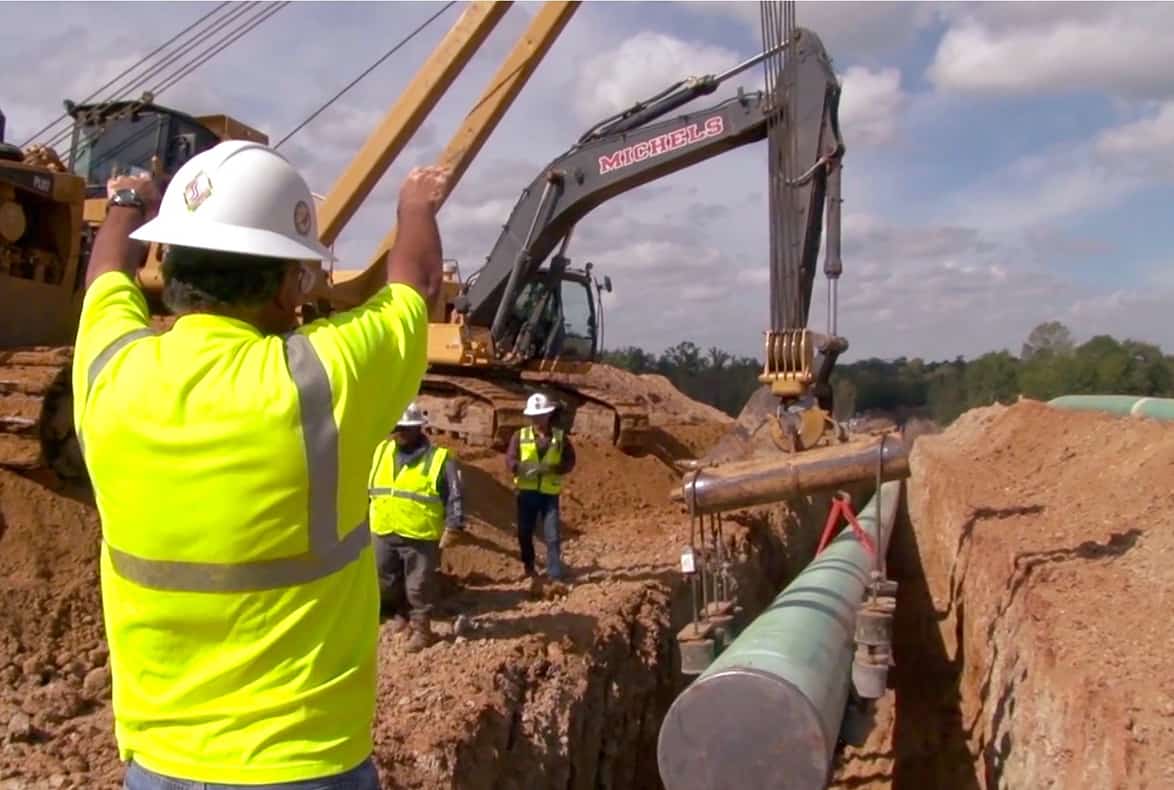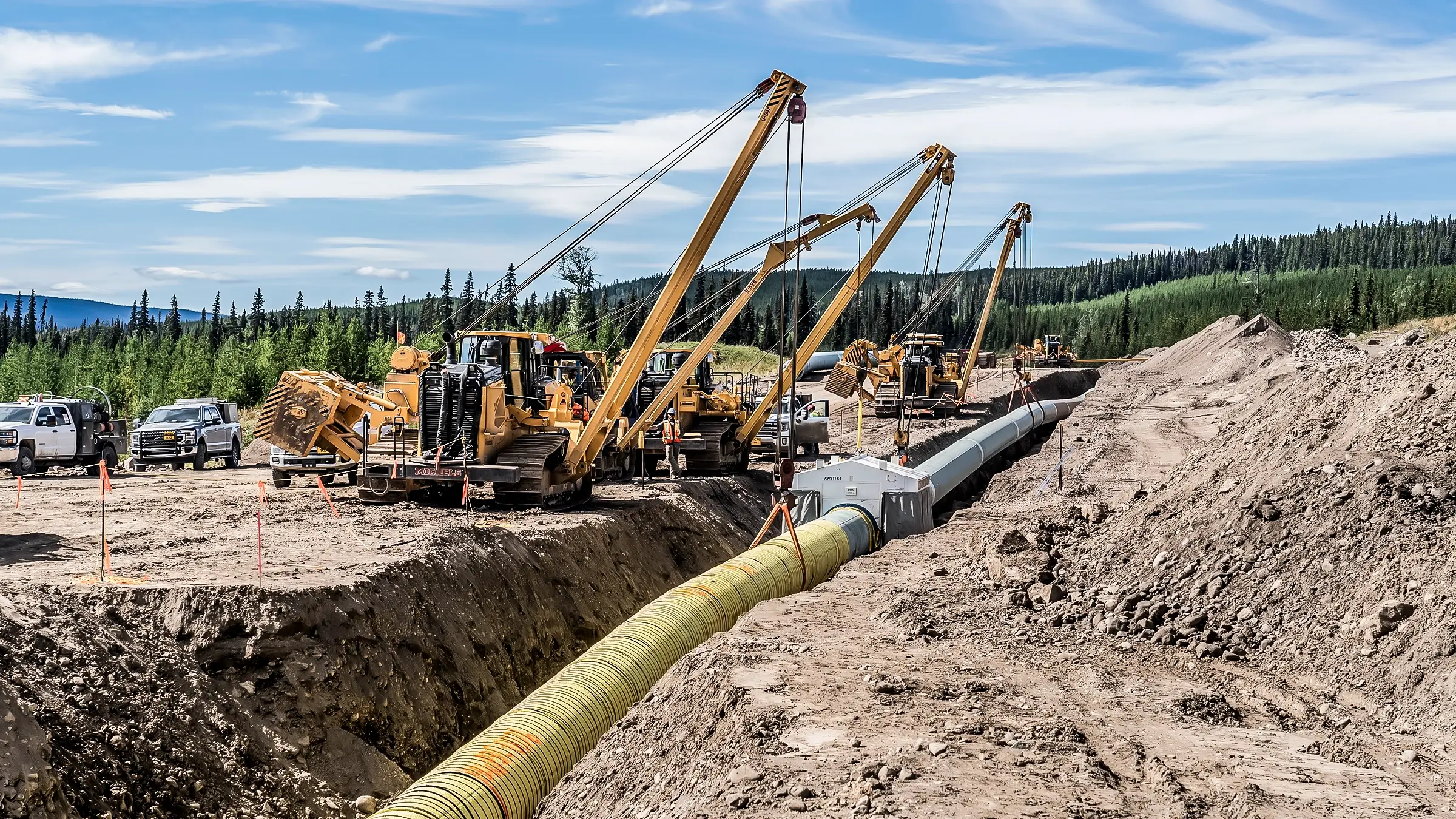Insider Tips for Safer Pipe Joining by Creek Pipe roustabout Crews
Wiki Article
What You Need To Learn About Pipe Trenching Solutions: A Comprehensive Summary of Available Options
Pipe trenching services are essential for the installment and maintenance of underground energies. They include various methods customized to particular needs and environments. Comprehending these methods is vital for reliable job implementation. Each alternative presents its very own set of advantages and obstacles. As the demand for reliable energy management rises, understanding what to take into consideration when picking a trenching service comes to be critical. What aspects should one prioritize to ensure success?Understanding Pipe Trenching: What It Is and Why It Issues
Commonly overlooked, pipeline trenching is an important process in numerous building and utility tasks. This method entails excavating narrow trenches to promote the installation of pipes for water, gas, sewer, and telecommunications. The relevance of pipeline trenching hinges on its function in making certain that these vital systems are effectively integrated into framework, making it possible for the safe and effective distribution of necessary services.Proper trenching is important for keeping the honesty of pipelines and reducing dangers connected with dirt erosion and cave-ins. It likewise enables for reliable examinations and maintenance of underground utilities. Furthermore, comprehending the regional laws and ecological factors to consider is crucial, as incorrect trenching can cause expensive hold-ups and lawful concerns. Inevitably, pipeline trenching offers as the fundamental action that sustains numerous building and construction endeavors, making it a significant aspect of modern facilities advancement.
Typical Trenching Approaches for Underground Energies
In the domain of underground utilities, numerous trenching approaches play an essential duty in installment and upkeep - Creek Pipe reviews. The open-cut trenching technique, directional dull technique, and hydro excavation process each deal special advantages depending on the details task demands. Comprehending these methods is essential for reliable and effective utility monitoringOpen-Cut Trenching Approach
Open-cut trenching is a commonly used approach for setting up underground energies, especially when the depth and width of the trench permit reliable gain access to. This method includes digging deep into a trench along the recommended path of the energy, supplying direct presence and ease of access for installation. It is specifically beneficial for tasks that need extensive excavation, as it promotes quick installment and evaluation. Nonetheless, it likewise demands cautious preparation to reduce disturbance to the surrounding area, consisting of traffic and existing frameworks. Open-cut trenching is most efficient in open spaces where the soil problems agree with, yet it might be limited in metropolitan settings due to the existence of existing energies and other underground challenges.Directional Boring Method

Hydro Excavation Process
Exactly how does hydro excavation attract attention amongst usual trenching methods for below ground energies? Hydro excavation makes use of high-pressure water and vacuum cleaner modern technology to securely get rid of dirt, permitting specific excavating around sensitive underground utilities. This method minimizes the risk of destructive existing framework contrasted to standard mechanical excavation. By utilizing water to loosen the soil, hydro excavation provides a much less intrusive technique, minimizing the capacity for soil compaction and ensuring a cleaner worksite. Additionally, the process improves exposure throughout excavation, enhancing general precision and performance. Hydro excavation is especially valuable in metropolitan areas where utility lines are largely loaded, making it a favored choice for professionals concentrated on safety and precision in below ground projects.Advantages of Trenching Services
While different approaches exist for installing below ground energies, trenching solutions use unique advantages that make them a recommended option for many jobs. One significant advantage is the cost-effectiveness of trenching, as it commonly needs much less specific tools compared to choices like hydro excavation. This commonly results in reduced labor and operational expenses. Additionally, trenching can fit a wide variety of utility types, consisting of water, sewer, and gas lines, giving flexibility for contractors.Moreover, trenching enables efficient accessibility to multiple lines in a single excavation, decreasing disruption to the surrounding location. The procedure also makes it possible for exact installment and repair, which is important for adhering to regulatory requirements and ensuring long-term dependability. Inevitably, trenching can be performed fairly promptly, reducing job timelines and permitting for faster solution restoration. These advantages collectively make trenching solutions a sensible option for numerous below ground energy tasks.Disadvantages and Challenges of Trenching
In spite of the countless benefits of trenching solutions, there are notable drawbacks and difficulties that should be taken into consideration. One substantial obstacle is the potential for soil instability, which can result in cave-ins, positioning dangers to workers and devices. Furthermore, trenching can interrupt existing utility lines, requiring cautious preparation and control to stay clear of service disruptions. The procedure can additionally be lengthy, especially in metropolitan areas where space is limited and access is limited. Trenching might need substantial authorizations and governing conformity, including complexity and potential hold-ups to tasks. Ecological issues, such as soil disintegration and damages to local communities, can occur from improper trenching techniques. Lastly, the costs linked with trenching, consisting of labor and equipment, can rise if unforeseen issues emerge during the project, making it crucial for stakeholders to consider these challenges versus the advantages when considering trenching solutions.Secret Elements to Think About When Selecting a Trenching Solution
Choosing the best trenching solution can significantly impact the success of a project. A number of crucial aspects ought to be analyzed to guarantee an appropriate selection. The business's experience and experience in trenching operations are vital; a reputable solution with a strong track record is usually extra reliable. Next, assessing the equipment used is essential, as modern-day equipment can enhance efficiency and precision. Furthermore, it is considerable to take into consideration the series of solutions offered, including excavation depth and soil type handling, to confirm they meet particular job requirements.Another aspect to evaluation is the business's track record; consumer testimonials and endorsements can give understandings right into previous efficiency. In addition, getting thorough quotes that describe expenses and timelines will certainly help in budget plan administration. Confirming compliance with local regulations and sector requirements is critical for staying clear of possible legal issues. By reviewing these aspects, clients can make an educated choice when selecting a trenching solution.Security Measures in Pipe Trenching
In pipeline trenching, security measures are essential to making sure worker defense and site honesty. Secret components consist of the use of individual protective tools, detailed excavation website examinations, and well-defined emergency reaction protocols. Carrying out these steps substantially minimizes risks connected with trenching procedures.Personal Safety Equipment
Safety and security in pipe trenching greatly depends on the appropriate usage of personal safety tools (PPE) Workers must wear difficult hats to shield against dropping things, in addition to high-visibility vests to boost their visibility on-site. Steel-toed boots are crucial for foot defense against heavy tools and products. Additionally, handwear covers are essential for hand safety, especially when taking care of rough or sharp objects. Respirators might additionally be necessary in atmospheres with dirt or unsafe fumes. Eye protection, such as security goggles, must be put on to secure against debris. Finally, hearing security is essential in noisy workplace. By adhering to PPE guidelines, workers can considerably lower the threat of injury and guarantee a safer trenching operation.Excavation Site Evaluation
Correctly checking the excavation website is a basic action in guaranteeing a secure pipeline trenching operation. This process includes assessing the site for potential risks such as underground utilities, unstable dirt problems, and neighboring frameworks. A detailed analysis enables the recognition of dangers that could compromise employee safety and security. In addition, confirming the soil type and dampness degrees can assist identify appropriate shoring methods to avoid trench collapses. It is necessary to ensure that the website is free from particles and that proper signs is shown to notify personnel of recurring procedures. Regular inspections throughout the task can likewise help detect any kind of modifications in site problems, allowing timely adjustments to safety and security procedures and work methods.
Emergency Situation Reaction Protocols
Emergency situation feedback protocols are crucial in mitigating dangers linked with pipe trenching procedures. These methods guarantee that all employees are prepared to act swiftly and successfully in emergency situations. Crucial element include routine safety and security drills, clear communication channels, and assigned fire escape. Furthermore, first-aid packages and emergency get in touch with numbers need to be readily available on-site. Trenching procedures must likewise consist of treatments for dealing with dangerous scenarios, such as collapses or utility strikes. Training workers on acknowledging possible threats and understanding their functions throughout an emergency situation is critical. Preserving an upgraded site security strategy can considerably boost feedback performance. Overall, effective emergency preparedness fosters a safer working environment and reduces the impact of unexpected events.Cost Considerations for Trenching Services
Understanding the financial implications of trenching solutions is essential for project preparation and budgeting. The prices related to trenching can differ commonly based on a number of factors, including project size, dirt kind, and deepness of the trench. Labor costs typically represent a significant portion of the complete expenditure, as knowledgeable drivers are needed for effective implementation. In addition, devices rental costs can add to the general budget, specifically for specialized machinery.Site availability is an additional crucial factor; hard surface may demand extra sources, boosting costs. Allowing and regulative conformity can likewise add to expenditures, particularly in city areas where regulations are stringent.Lastly, unanticipated problems, such as encountering existing energies, can lead to unforeseen costs and hold-ups. Therefore, getting in-depth estimates from trusted trenching company is vital for exact budgeting and guaranteeing effective job conclusion.Often Asked Inquiries
For how long Does a Normal Pipe Trenching Task Take?
The duration of a regular pipeline trenching project differs considerably based upon variables such as depth, dirt problems, and task complexity. Usually, it can take anywhere from a few days to a number of weeks to finish.What Equipment Is Generally Used in Pipe Trenching?

Exist Environmental Regulations for Trenching Activities?
Ecological regulations for trenching activities frequently need compliance with local, state, and federal guidelines. These regulations aim to minimize ecological disruption, protect water sources, and warranty correct waste monitoring throughout excavation and setup processes.
Creek Pipe roustabout
Can Trenching Services Be Combined With Various Other Building And Construction Tasks?
Trenching solutions can undoubtedly be integrated with various construction tasks. By working with efforts, efficiencies can be achieved, decreasing disturbances while making sure that all required infrastructure job is completed in a prompt and cost-effective manner.
What Are Usual Soil Types Run Into in Trenching?
Typical soil kinds come across in trenching include clay, sand, silt, and loam. Each kind provides unique obstacles, impacting excavation approaches and security, necessitating mindful planning to assure risk-free and reliable trenching operations.Report this wiki page